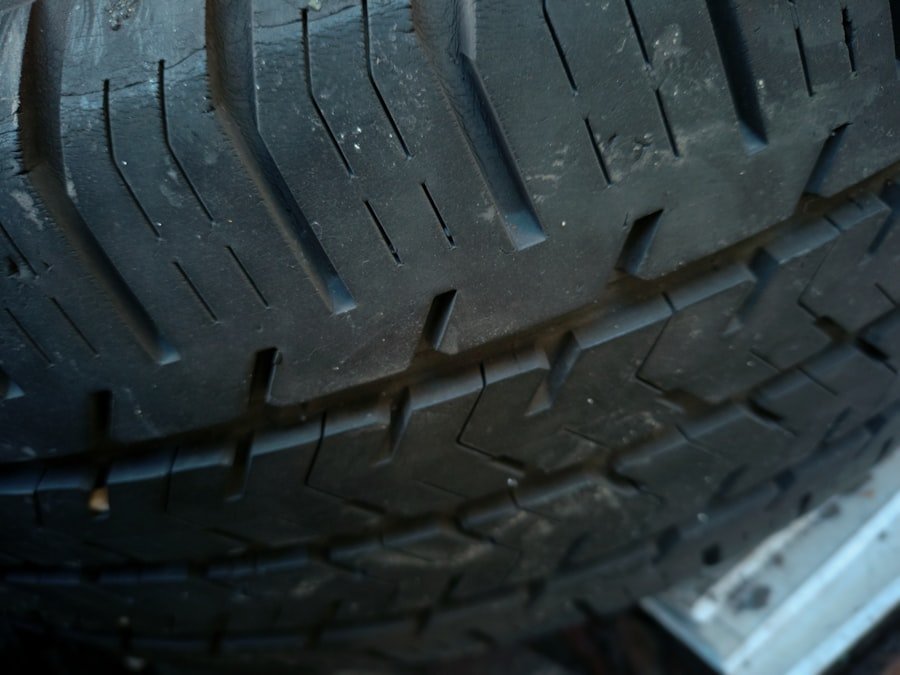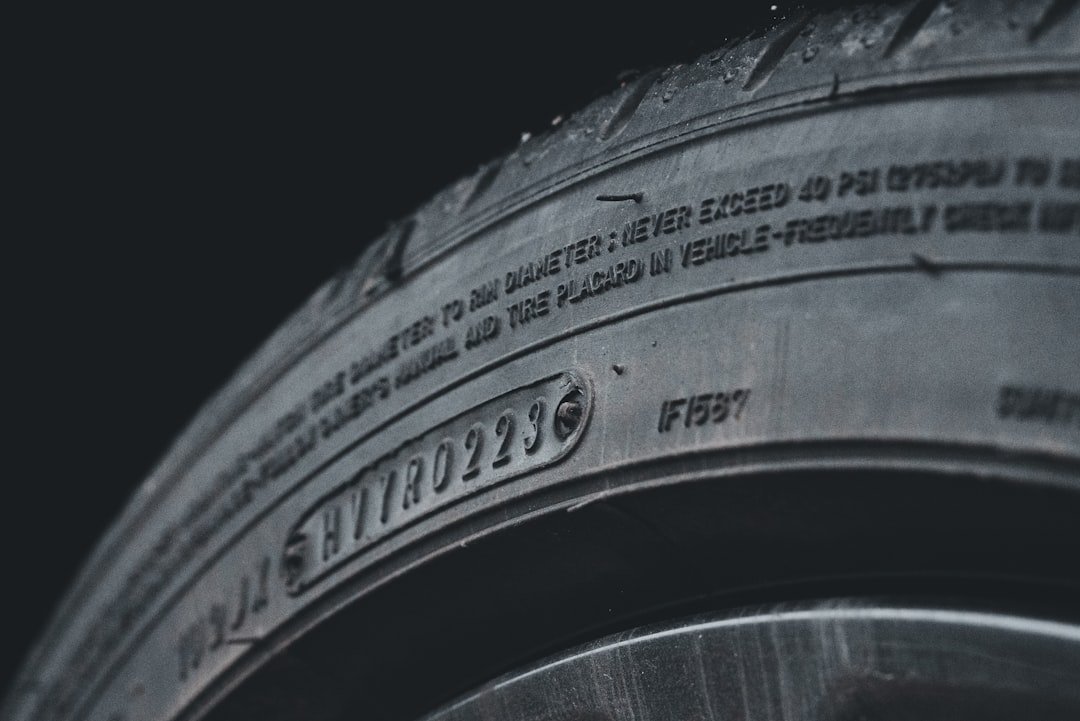Tire size is a critical aspect of vehicle performance, safety, and efficiency. It encompasses a range of measurements that dictate how a tire interacts with the road, influences handling, and affects fuel economy. Understanding tire size is not merely a matter of aesthetics; it plays a vital role in ensuring that a vehicle operates as intended.
From the moment a vehicle rolls off the assembly line, the tire size is meticulously chosen to match the design specifications and performance goals of that particular model. As such, it is essential for vehicle owners to grasp the implications of tire size and how it can impact their driving experience. In an era where customization and personalization are increasingly popular, many drivers may feel tempted to alter their vehicle’s tire size for aesthetic reasons or perceived performance benefits.
However, this can lead to unintended consequences that compromise safety and efficiency. Therefore, a comprehensive understanding of tire size is crucial for anyone who owns or operates a vehicle.
Key Takeaways
- Tire size refers to the dimensions of a tire, including width, aspect ratio, and rim diameter.
- Understanding tire size measurements involves knowing how to interpret the numbers and letters on the sidewall of a tire.
- It is important to choose the correct tire size for your vehicle to ensure safety, performance, and fuel efficiency.
- Factors to consider when selecting tire size include driving conditions, vehicle type, and manufacturer recommendations.
- Incorrect tire size can negatively impact vehicle performance, including handling, braking, and fuel economy.
The Meaning of Tire Size
Tire size refers to the specific dimensions and characteristics of a tire, which are typically represented in a standardized format on the tire’s sidewall. This designation includes several key measurements: the width of the tire, the aspect ratio, and the diameter of the wheel it fits. For example, a tire labeled as 225/45R17 provides information about its width in millimeters, its aspect ratio as a percentage of the width, and the diameter of the wheel in inches.
Each component of this designation plays a significant role in determining how the tire performs under various conditions. The width of the tire is crucial because it affects traction and handling. A wider tire generally provides more surface area in contact with the road, which can enhance grip during cornering and braking.
However, it can also lead to increased rolling resistance, which may negatively impact fuel efficiency. The aspect ratio indicates the height of the tire’s sidewall relative to its width; a lower aspect ratio typically results in a sportier ride with improved handling but can sacrifice comfort due to reduced cushioning. Finally, the diameter of the wheel is essential for ensuring that the tire fits properly on the vehicle’s rims, affecting overall ride quality and performance.
Understanding Tire Size Measurements

Tire size measurements are standardized by organizations such as the Tire and Rim Association (TRA) and the European Tyre and Rim Technical Organisation (ETRTO). These standards ensure consistency across manufacturers and regions, allowing consumers to make informed choices when selecting tires. The most common format used in North America is known as P-metric sizing, which begins with a letter indicating the type of tire (e.g.
For instance, in a tire size labeled P215/65R15, “P” signifies that it is designed for passenger vehicles, “215” indicates the tire’s width in millimeters, “65” represents the aspect ratio (the height of the sidewall as a percentage of the width), “R” denotes radial construction, and “15” indicates that it fits a 15-inch wheel. Understanding these measurements is essential for making informed decisions about tire selection, as each component influences performance characteristics such as ride comfort, handling stability, and fuel efficiency.
How to Read a Tire Size
| Tire Size | Meaning |
|---|---|
| Example: P215/65R15 | P: Passenger tire, 215: Width of the tire in millimeters, 65: Aspect ratio of the tire, R: Radial construction, 15: Diameter of the wheel rim in inches |
Reading a tire size may seem daunting at first glance due to its alphanumeric format; however, breaking it down into its components makes it more manageable. The first step is to identify the type of tire based on the initial letter or letters. For example, “P” indicates a passenger tire, while “LT” signifies light truck tires.
This classification helps consumers understand the intended use of the tire. Next, focus on the numerical values that follow. The first number represents the tire’s width in millimeters; for instance, in a size of 225/50R17, “225” indicates that the tire is 225 millimeters wide.
The second number is crucial as it reveals the aspect ratio; in this case, “50” means that the sidewall height is 50% of the width. The letter “R” indicates radial construction, which is standard for most modern tires due to its advantages in performance and durability. Finally, the last number denotes the diameter of the wheel in inches; thus, “17” means this tire fits a 17-inch rim.
By understanding these components, drivers can make informed choices when purchasing new tires.
Importance of Choosing the Correct Tire Size
Selecting the correct tire size is paramount for several reasons. Firstly, it directly impacts vehicle safety. Tires that are too small or too large can lead to handling issues, increased stopping distances, and even blowouts.
For instance, if a driver installs tires that are significantly wider than recommended for their vehicle, they may experience rubbing against suspension components or fenders during turns or bumps. This not only compromises safety but can also lead to costly repairs. Secondly, choosing the right tire size affects fuel efficiency and overall performance.
Tires that are not suited to a vehicle’s specifications can create additional rolling resistance or alter gear ratios, leading to decreased fuel economy. For example, larger tires may require more power from the engine to maintain speed, resulting in higher fuel consumption. Conversely, tires that are too small may not provide adequate grip or stability at higher speeds.
Therefore, adhering to manufacturer recommendations for tire size is essential for maintaining optimal performance and efficiency.
Factors to Consider When Selecting Tire Size

When selecting tire size for a vehicle, several factors must be taken into account beyond just aesthetics or personal preference. One critical consideration is the vehicle’s intended use. For example, off-road vehicles may benefit from larger tires with aggressive tread patterns for enhanced traction on rough terrain.
In contrast, performance-oriented vehicles may require lower-profile tires for improved handling and responsiveness on paved roads. Another important factor is climate and driving conditions. Drivers in regions with heavy snowfall may opt for narrower tires with deeper treads to cut through snow more effectively.
Conversely, those in warmer climates may prefer wider tires that provide better grip on dry surfaces. Additionally, load capacity should be considered; heavier vehicles or those frequently carrying loads may require tires designed to handle increased weight without compromising safety or performance.
Common Misconceptions about Tire Size
There are several misconceptions surrounding tire size that can lead to confusion among consumers. One prevalent myth is that larger tires always equate to better performance. While wider tires can enhance grip under certain conditions, they can also increase rolling resistance and reduce fuel efficiency.
Furthermore, larger tires may alter a vehicle’s suspension geometry or affect its speedometer accuracy if not calibrated correctly. Another common misconception is that all tires with similar measurements will perform identically. In reality, various factors such as tread design, rubber compounds, and construction techniques significantly influence how a tire behaves on different surfaces and under varying conditions.
For instance, two tires with identical dimensions may have vastly different performance characteristics if one is designed for all-season use while another is optimized for high-performance driving.
Effects of Incorrect Tire Size on Vehicle Performance
Using incorrect tire sizes can have detrimental effects on vehicle performance across multiple dimensions. One immediate consequence is compromised handling; tires that do not fit properly can lead to unpredictable steering responses and reduced stability during cornering or emergency maneuvers. This can be particularly dangerous in adverse weather conditions where precise control is essential.
Additionally, incorrect tire sizes can adversely affect braking performance. Tires that are too wide may lead to longer stopping distances due to increased friction with the road surface while also causing uneven wear patterns that diminish overall lifespan. On the other hand, tires that are too narrow may struggle to provide adequate grip during braking events, increasing the risk of skidding or loss of control.
How to Determine the Right Tire Size for Your Vehicle
Determining the right tire size for your vehicle involves consulting several resources to ensure accuracy and compatibility. The first step is to refer to the owner’s manual or look for a placard located on the driver’s side door jamb or inside the fuel filler cap; these sources typically provide manufacturer-recommended tire sizes along with load ratings and inflation pressures. Another useful approach is to consult with professionals at tire shops or dealerships who can offer expert advice based on your specific vehicle model and driving habits.
They can also help assess whether any modifications have been made to your vehicle that might necessitate adjustments in tire size. Additionally, online tools and calculators are available that allow drivers to input their vehicle information and receive recommendations tailored to their needs.
Tips for Maintaining Proper Tire Size
Maintaining proper tire size involves regular checks and adherence to best practices throughout the life of your tires. One essential tip is to routinely inspect your tires for signs of wear or damage; this includes checking tread depth using a gauge or penny test to ensure they meet safety standards. Uneven wear patterns may indicate misalignment or improper inflation levels that need addressing.
Another important aspect is monitoring tire pressure regularly; under-inflated or over-inflated tires can lead to premature wear and affect handling characteristics. Most vehicles have recommended pressure levels printed on placards inside the driver’s door frame or in the owner’s manual; adhering to these guidelines ensures optimal performance and safety. Maintaining proper alignment and rotation schedules also contributes significantly to extending tire life and ensuring even wear across all four tires.
Regularly scheduled maintenance checks at professional service centers can help identify potential issues before they escalate into more significant problems.
The Significance of Understanding Tire Size
Understanding tire size is fundamental for any vehicle owner who wishes to ensure optimal performance and safety on the road. From deciphering measurements to recognizing how they influence handling and fuel efficiency, knowledge about tire size empowers drivers to make informed decisions when purchasing new tires or maintaining their current ones. By considering factors such as intended use, climate conditions, and manufacturer recommendations, drivers can select tires that not only enhance their driving experience but also contribute positively to overall vehicle longevity and safety.
In an age where customization options abound, it’s easy for drivers to overlook critical aspects like proper sizing in favor of aesthetics or trends; however, prioritizing functionality over appearance will yield far greater benefits in terms of safety and performance over time. Ultimately, understanding tire size is not just about numbers—it’s about ensuring every journey taken on four wheels is as safe and efficient as possible.
If you’re looking to upgrade your outdoor cooking game, you may want to check out this article on the top pizza ovens of 2025. Just like choosing the right tire size for your vehicle, selecting the best pizza oven can make a big difference in the quality of your cooking experience.
FAQs
What is tire size?
Tire size refers to the measurements of a tire, including its width, aspect ratio, and diameter, which are typically displayed on the sidewall of the tire.
How is tire size measured?
Tire size is typically measured in a series of numbers and letters, such as P215/65R15. The first number (215) represents the width of the tire in millimeters, the second number (65) represents the aspect ratio (the height of the tire’s sidewall as a percentage of the width), and the last number (15) represents the diameter of the wheel in inches.
Why is tire size important?
Tire size is important because it affects the handling, performance, and safety of a vehicle. Using the correct tire size recommended by the vehicle manufacturer ensures proper fitment and performance.
How do I know what tire size fits my vehicle?
The recommended tire size for a vehicle can usually be found in the owner’s manual, on a sticker inside the driver’s side door jamb, or by consulting a tire professional. It is important to use the correct tire size for your specific vehicle to ensure proper fit and performance.
Can I change the tire size on my vehicle?
It is possible to change the tire size on a vehicle, but it is important to consult with a tire professional to ensure that the new tire size is compatible with the vehicle and will not negatively impact performance or safety.

